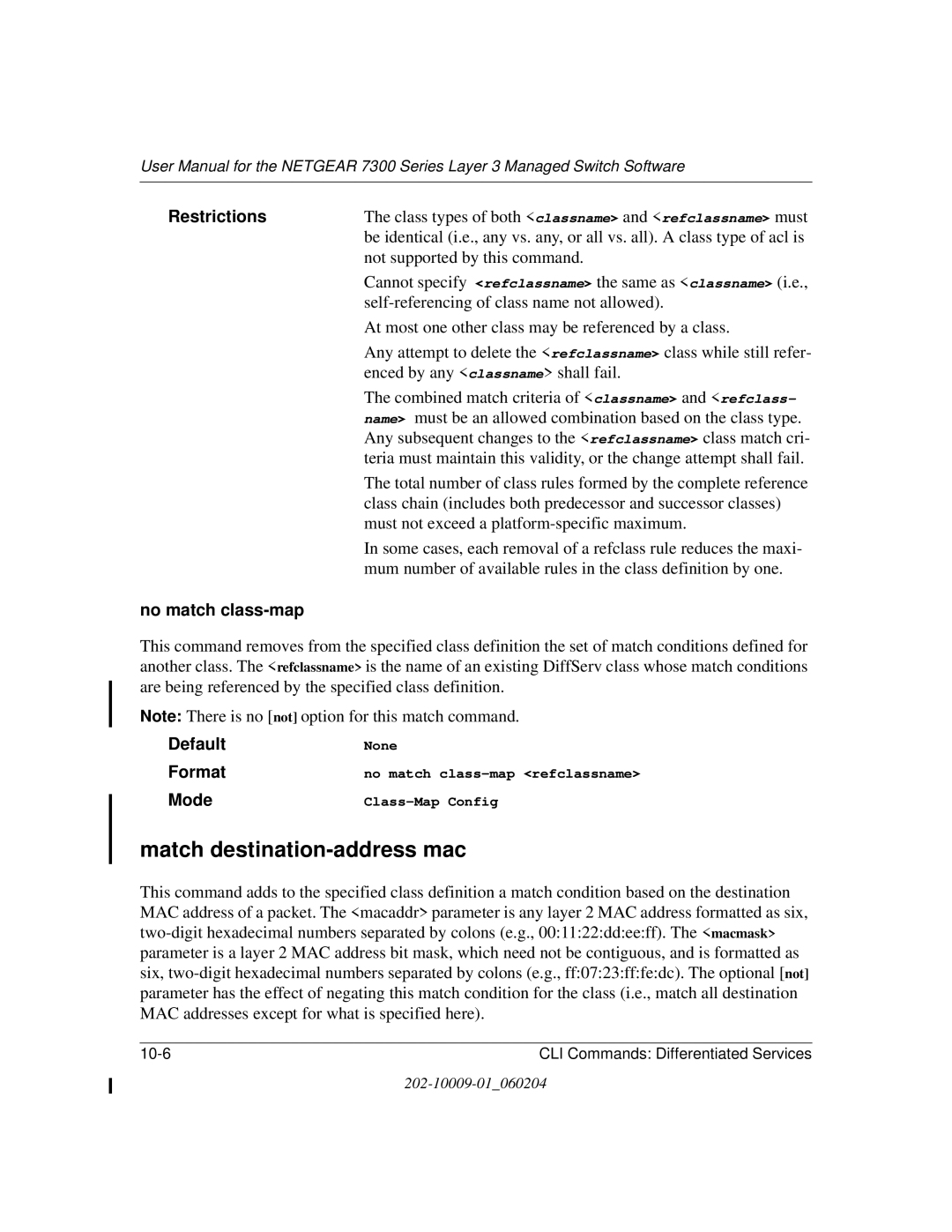
User Manual for the NETGEAR 7300 Series Layer 3 Managed Switch Software
Restrictions | The class types of both <classname> and <refclassname> must |
| be identical (i.e., any vs. any, or all vs. all). A class type of acl is |
| not supported by this command. |
| Cannot specify <refclassname> the same as <classname> (i.e., |
| |
| At most one other class may be referenced by a class. |
| Any attempt to delete the <refclassname> class while still refer- |
| enced by any <classname> shall fail. |
| The combined match criteria of <classname> and <refclass- |
| name> must be an allowed combination based on the class type. |
| Any subsequent changes to the <refclassname> class match cri- |
| teria must maintain this validity, or the change attempt shall fail. |
| The total number of class rules formed by the complete reference |
| class chain (includes both predecessor and successor classes) |
| must not exceed a |
| In some cases, each removal of a refclass rule reduces the maxi- |
| mum number of available rules in the class definition by one. |
no match |
|
This command removes from the specified class definition the set of match conditions defined for another class. The <refclassname> is the name of an existing DiffServ class whose match conditions are being referenced by the specified class definition.
Note: There is no [not] option for this match command.
Default | None |
Format | no match |
Mode |
match destination-address mac
This command adds to the specified class definition a match condition based on the destination MAC address of a packet. The <macaddr> parameter is any layer 2 MAC address formatted as six,
CLI Commands: Differentiated Services |
